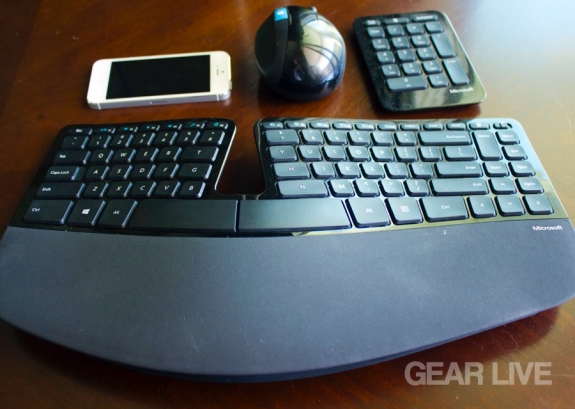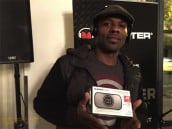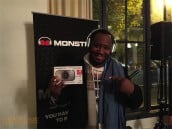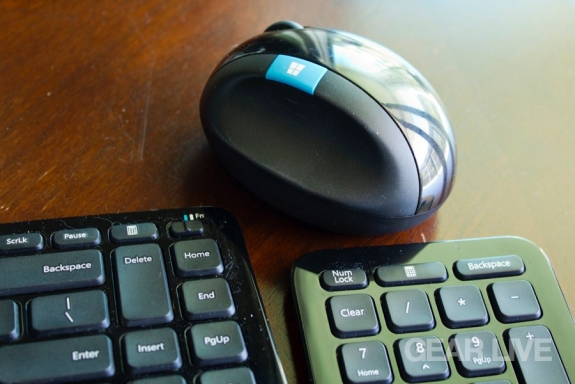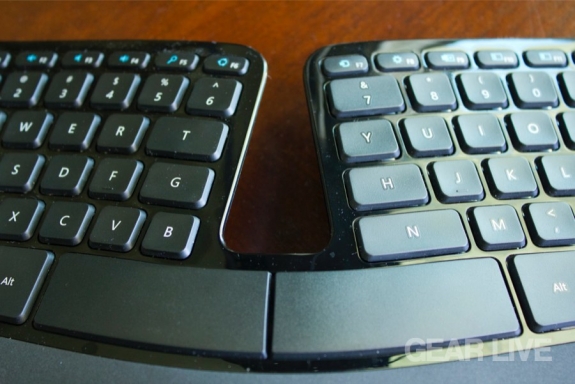Find Our Latest Video Reviews on YouTube!
If you want to stay on top of all of our video reviews of the latest tech, be sure to check out and subscribe to the Gear Live YouTube channel, hosted by Andru Edwards! It’s free!
Friday October 4, 2013 6:05 pm
Microsoft Sculpt Ergonomic Desktop review

Posted by Andru Edwards Categories: Accessories, Features, Microsoft, PC / Laptop, Peripherals, Product Reviews
Now that I've been using the Microsoft Sculpt Ergonomic Keyboard for over a week, my search for the ultimate keyboard might be finally over. It might be one of the strangest looking keyboards Microsoft has ever put out.
The Sculpt combines the curved ergonomic structure the company has been making for almost 20 years with a raised wrist area and a completely empty middle. Couple that with something Microsoft has barely done with their keyboards—laptop-style, easy-to-press scissor key set that's way less stressful on the fingers than anything previous--and you've got a keyboard that's vying for the title of "best keyboard they've ever made."
KEYBOARD DESIGN
The Sculpt Ergonomic Keyboard builds upon Microsoft's previous generation, the Sculpt Comfort Desktop. Like the Comfort, the Ergo has a raised middle section, split space bar keys, a raised padded wrist rest area and the standard curved key layout.
The major differences between these two generations are that the numpad is broken off into its own wireless unit, the scissor-key style I mentioned earlier, and the fact that there's now a big gap between the left and right hand keys. The last fact means you have a harder time keeping one hand on your mouse and using the other to hit some quick key combination. You really have to move both hands back to the home row to do most of your typing.
One minor detail that we shouldn't overlook is how all the battery compartments on the keyboard and the mouse are magnetized, as is the wrist-rest-raiser. This small change compared to just about every other keyboard on the market means changing batteries won't hurt your fingernails, and it makes it easy to dock/undock the keyboard raiser while you're getting used to the fact that you're supposed to keep your wrists high when you type.
USING THE KEYBOARD
I wasn't exaggerating when I said that this keyboard is most likely the best keyboard I've ever used. The ergonomic-ness of Microsoft's curved and split setup continues to impress as it has for the last two decades. The lifted up wrist area helps keep your hands in the optimal position without pinching or pressing on the incorrect area of your wrist, like a gel pad can, which can aggravate any carpal tunnel syndrome effects you might be suffering.
The themselves are what's majorly changed since the last version. By introducing a softer, laptop-style scissor-key, Microsoft has made sure typing uses as little effort as possible while still maintaining the right tactile feedback to be satisfying. This makes sure your typing speed remains high while not overly straining your wrist or finger muscles. I type as fast on this keyboard as I do all my other laptop-style keyboards, and without any sort of pain or strain.
It is a little strange that the numpad is separate from the keyboard, and reaching over to hit the numbers is even more awkward when you consider the elevation difference from the raised keyboard. Still, many people don't care about the numpad at all in day to day typing, and only bust it out when they need to do a lot of data entry. It's a nice to have addition that you can store away when not in use.
Gallery:
MOUSE DESIGN
Microsoft's also gone down the ergonomic route with the mouse in this Ergonomic Desktop set by making it round and bulbous, much like a tiny melon with a chunk scooped out of the side.
Unlike the curved, split key orientation of the keyboard, which was standardized more than a decade ago and only gets small yearly tweaks to improve, Microsoft is still adjusting the mouse in large, broad strokes in order to find a good compromise between usability and comfort. The closest parallel I can find to using this mouse is using an old school trackball. You grip the mouse with your entire hand, and the back of the mouse cradles your palm just like a tennis ball does. And like trackballs, which many CTS sufferers prefer to use to eliminate pain, this mouse is designed to keep your hand in the most natural position possible.
HOW THE MOUSE FEELS
I never had wrist pain from using a mouse since I already use a Logitech Performance MX, but even compared to that already ergonomically-sound design, Microsoft's version excels at keeping your plam and wrist in the correct position. After a few days of adjustment time, the mouse feels as natural as Logitech's did, even if it is quite a bit bigger and quite a bit different when you're moving the cursor around.
There are few extra buttons on the mouse to click on, and it's fairly bare-bones if you're comparing it to Logitech's, but that's not the point of the device. Like the keyboard, Microsoft's mouse is designed to keep you pain free, with a much lesser focus on bells and whistles.
CONCLUSION
As a person who loves ergonomic keyboards and loves laptop-style keys, I'm hard-pressed to find a better combination of the two technologies than Microsoft's Sculpt Ergonomic Desktop. Laptop style keys usually come in small, laptop-style keyboards which allow you to type very fast, but aren't very good to your wrists. Ergonomic keyboards are great for posture and keeping your hands where they need to be healthwise, but they're not conducive to quick typing with minimal effort. This keyboard really has everything.
You can pick up the Microsoft Sculpt Ergonomic Desktop on Amazon for $109.76, a 16% savings on the retail price.


